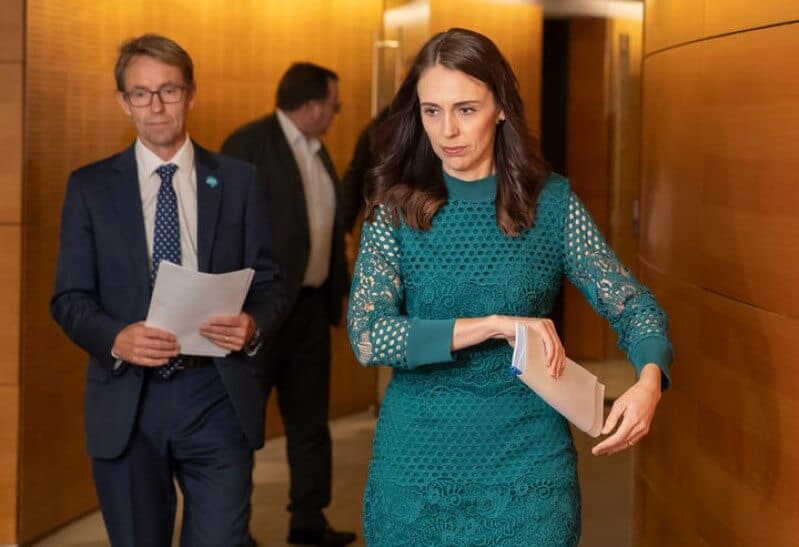The government massively underestimated the number of people who would be returning to New Zealand – and the cost of keeping them in managed isolation, according to documents released today.
Hundreds of documents related to the government’s pandemic response were released this morning.
They included a Cabinet paper on 17 April, which put the estimated at $195 million for the first six months, based on 190 arrivals a day.
However, in the first two and a half months, the bill had already hit about $80m and is now forecast to reach half a billion by the end of the year.
Megan Woods, the minister in charge of managed isolation facilities, this week announced plans to charge those who enter New Zealand temporarily or left after the new regulations come into force.
This is expected to recoup less than $10m.
Another paper from 17 June on , noted the risk that some people could be stranded in New Zealand as border restrictions changed at short notice.
“If their next country after New Zealand refuses to let them board, there may not be another flight back to [the country they just left] so the passenger will have to stay in Auckland in managed isolation.”
Increased social inequality
The government expects the already high and increasing rates of homelessness will be made worse by the social and economic impacts emerging from Covid-19.
According to a Cabinet committee , over 1000 individuals have been housed in motels across the country.
It says an increase in unemployment and income reductions are expected to further increase homelessness in both the immediate future and the longer term.
It notes that at the beginning of July, demand for Emergency Housing Special Needs Grants had already gone up 42 percent over the 10-week period from the start of alert level 4.
The report says the impacts of Covid-19 are will likely to worsen inequalities for groups who already experience high rates of homelessness, such as Māori, Pacific peoples and rangatahi, or young people.
Mandatory display of QR codes considered
Business owners could have faced prison or hefty fines for refusing to display government QR codes for rapid contact tracing, under options considered by Cabinet.
In a paper from Prime Minister Jacinda Ardern on 8 June, Cabinet was asked to decide whether to require businesses to display QR codes or merely encourage them to do so.
“My recommendation is to take a voluntary approach at this time, but with the knowledge that the option to make it a legal requirement is available if required,” Ardern wrote.
Under the Covid-19 Public Health Response Act 2020, non-compliance would be subject to penalties of up to six months in prison or a $4000 fine.
The paper noted there would also be “challenges for enforcement” of a mandatory approach.
“Officials recommend exemptions for organisations where obtaining a QR code is not reasonably necessary or practical.
“This would make it difficult to know if an organisation not displaying a code is non-compliant or exempt.
“And a mandatory requirement would need to cover retail outlets. It might seem discordant that retailers would face enforceable requirements to support contact tracing at alert level 1 when they did not at level 2.”
A voluntary approach, by contrast, would “generate a more positive tone”.
Public health impacts
The Health Ministry dismissed pleas from intensive care specialists for higher-grade masks for health workers dealing with Covid patients.
A Cabinet paper from 2 June noted a request from an expert advisory group to on protective masks in intensive care units.
The ministry currently recommends surgical masks for all healthcare workers in contact with suspected or confirmed Covid cases, and the use of N95 masks during risky procedures.
The expert advisory group recommended N95 respirator masks be used by all healthcare workers managing suspected Covid cases, and those doing risky procedures be given N100 grade masks.
However, the Health Ministry said however there was no clinical evidence that N100 respirators provided greater protection against Covid-19.
“The ministry recommends that there is no change to the current guidance, but that the guidance is reviewed as additional evidence and data becomes available.”
The Director-General of Health wanted the country to stay at level 2 restrictions for another few days.
In a report to then Health Minister David Clark on 5 June, Dr Ashley Bloomfield said New Zealand was “on track” to move to alert level 1 in the week beginning 8 June – much earlier than his previous advice that loosening restrictions should not be considered until at least 26 June.
“My preference would be for level 1 to come into effect on Friday 12 June, which is 14 days since level 2 was fully implemented and the time when conservative estimates indicate a 95 percent chance Covid-19 has been eliminated.”
However, when Cabinet met on 8 June it decided to move to level 1 from midnight.
Source: rnz.co.nz Republished by arrangement

